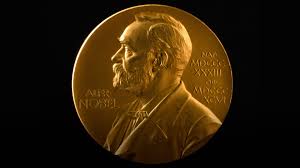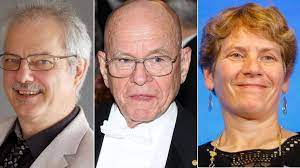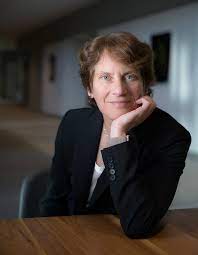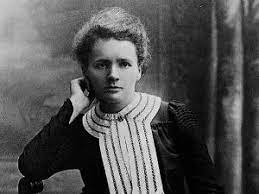
Women scientists lead revolutionary scientific research, however, despite their extraordinary discoveries, women worldwide represent only 30 percent in science, according to data from the United Nations (UN). Female scientists are rarely recognized for their achievements – only three percent of Nobel Prizes in science have ever been awarded to women, and only 11 percent of women are in senior research positions leading projects in Europe.
Globally, the enrollment of female students is particularly low in information and communication technologies – three percent, in natural sciences, mathematics and statistics – five percent and in engineering, manufacturing and construction – eight percent.
Today, women make up half of the workforce, earn more university degrees than men and, according to some estimates, represent the single largest economic force in the world. Still, gender gaps in science persist more than in other professions, especially in cutting-edge, math-intensive fields like computer science and engineering.
Many cultural barriers to women continue to stand in the way of science, from directing girls to other occupations, gender bias, stereotypes and sexual harassment in a male-dominated workplace to possible career restrictions for women due to childbearing. The contribution of women to science that remained unrecorded is not surprising because since the emergence of professional science in the 19th century, women scientists, with notable exceptions, often did not receive credit for their work. Also, the work of those who collaborated with men, most often relatives, was often attributed to the work of their brothers, fathers or husbands.
Science and gender equality are vital to achieving internationally agreed development goals, including the 2030 Agenda for Sustainable Development, according to the UN. Over the past 15 years, the global community has invested a lot of effort in inspiring and involving women and girls in science. However, women and girls are still excluded from full participation in science.
Ever since the UN General Assembly declared February 11 as the International Day of Women and Girls Scientists in 2015, the goal has been to raise awareness of the issue that celebrates female excellence in science. Throughout history, although famous scientists like Marie Curie and Jane Goodall were eventually recognized for their contributions to science, a significant number of female scientists were overlooked and marginalized simply because of their gender. However, despite the challenges of gender discrimination and lack of recognition in the scientific community, countless inspiring women in these fields have made historic contributions to science and helped advance our understanding of the world around us. Many were not recognized during their lifetime, but their achievements helped new generations of female scientists.
Women in science, neglected in history
One of the closest examples of the omission of women from the history of science in the Balkans is the story of Mileva Marić, a Serbian physicist and mathematician, Albert Einstein’s first wife. The marriage of Albert Einstein and Mileva Marić was the relationship of two brilliant minds, one of which characterized the 20th century, and the other became an example of a stumbling block encountered by female scientists.
Mileva Marić (1875-1948) was a physics student in Switzerland when she met Albert Einstein, who was 17 years older.
Mileva Marić did not publish any research or claim credit for any of Einstein’s discoveries; any work they did together was done in privacy. All arguments for and against her participation in Einstein’s discoveries are circumstantial. But the lack of direct evidence has never stopped debates about her contribution. The letters Milevi wrote to Einstein in which he talks about the ideas of relative motion and molecular forces – for which he later became famous – contain the words “we” and “our” referring to research.

As Nature magazine writes, the controversy about Mileva’s contribution to science and Einstein’s research was stirred up by the biography of Mileva Marić from 1969, prepared by high school teacher Desanka Trbuhović-Gjurić. The book claimed that Mileva’s contribution to Einstein’s success was “large and significant”. That assessment was based on the testimony of contemporaries, Mileva’s early academic success, and Einstein’s 1921 Nobel Prize legacy as part of the divorce settlement. Later, the linguist Senta Troemel-Ploetz and the physicist and parapsychologist, Evan Harris Walker, interpreted the letters the pair wrote to each other as evidence that Mileva’s ideas were central to Einstein’s pursuit of science.
Lise Meitner (1878-1968) was a nuclear physicist born in Vienna who was the first woman with the title of professor of physics in Germany.

She worked with fellow scientists Otto Hahn and Otto Robert Frisch and was part of a small team that discovered nuclear fission, a process that would later help develop nuclear weapons and generate electricity.
Meitner not only suffered gender discrimination in the workplace during the 1930s, but also the greater threat of ethnic cleansing. She lost many prestigious academic positions because of the anti-Jewish laws enforced by the Nazis. She eventually fled to Sweden and acquired dual citizenship there.
Although she received numerous prestigious awards later in life, Lise Meitner was not the winner of the 1944 Nobel Prize in Chemistry, which was awarded solely to her fellow scientist Otto Hahn for the discovery of nuclear fission. Many scientists later said that the exclusion of Lisa Meitner by the Nobel committee was “unfair”.
Rosalind Franklin (1920-1958) was a British chemist who researched DNA.

The data from her research was the first to show the basic dimensions of DNA chains and revealed that the molecule is in two matching parts, which go in opposite directions. Her discoveries were used by James Watson and Francis Crick to supplement their research on the DNA model. These studies were published as supplementary data along with research articles by Watson, Crick and Maurice Wilkins in the journal Nature.
Many in the scientific community argue that Rosalind Franklin should have received the Nobel Prize together with Watson, Crick and Maurice Wilkins in 1962 “for their discoveries concerning the molecular structure of nucleic acids and its importance for the transmission of information in the living organism”. Sadly, Rosalind died of ovarian cancer in 1958, just four years before the prize was awarded. At that time, the Nobel Committee could also award the prize posthumously.







Leave a comment